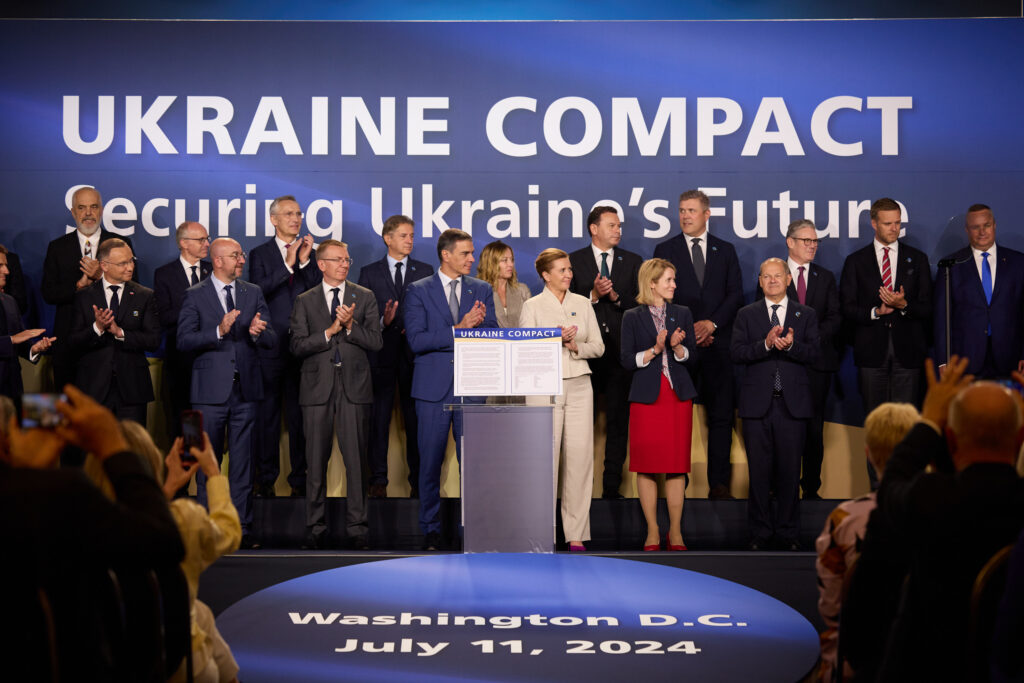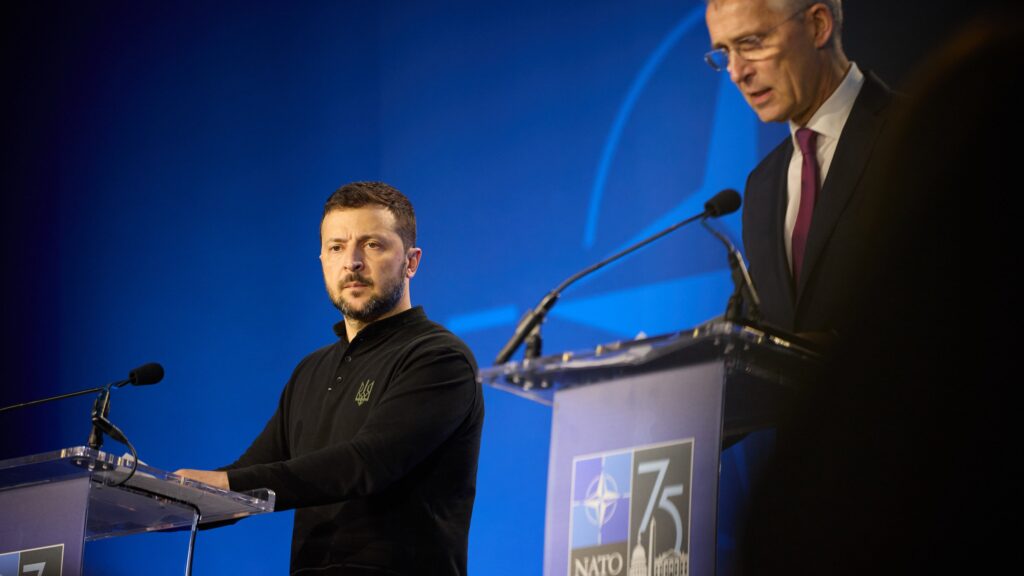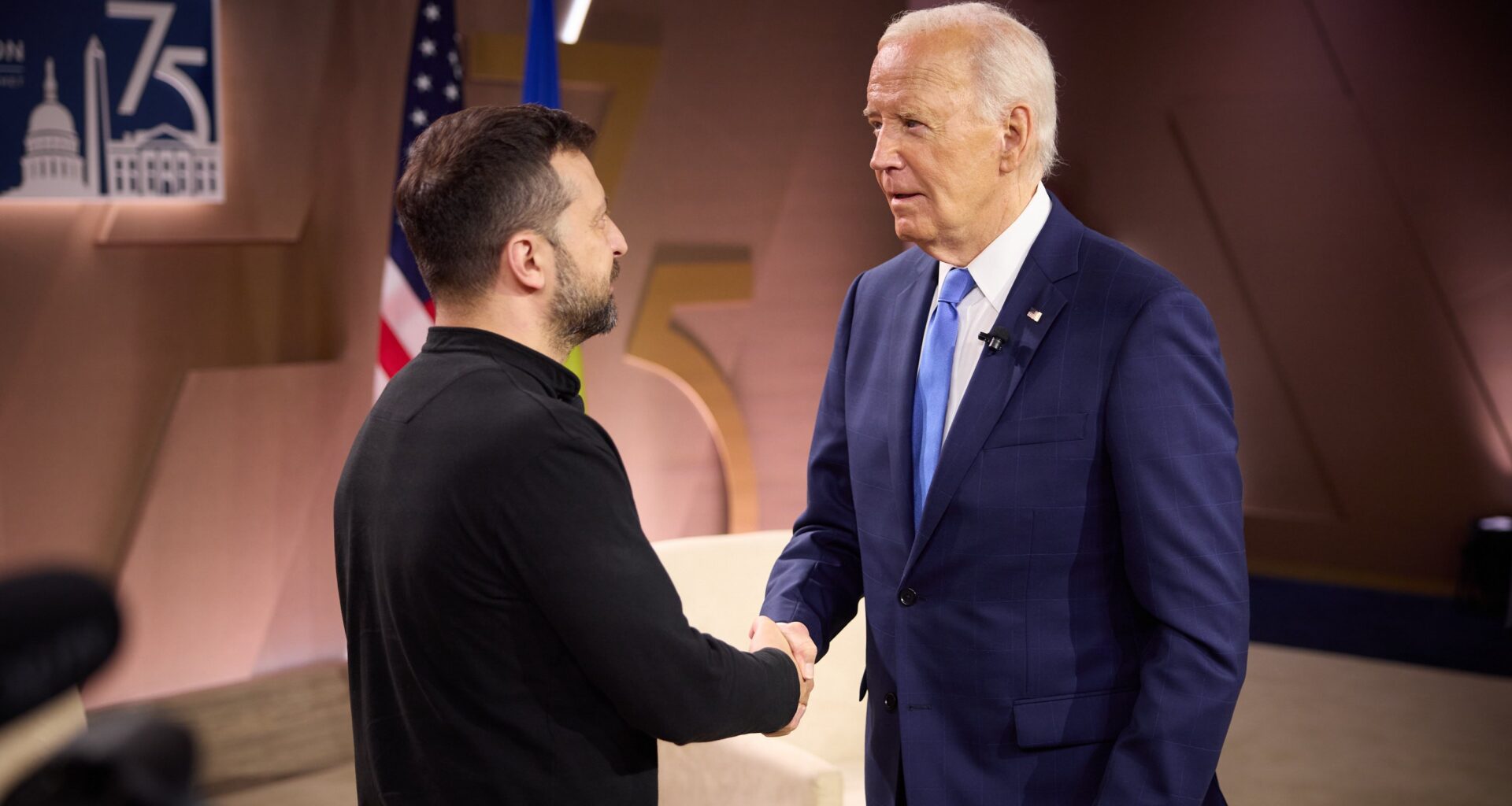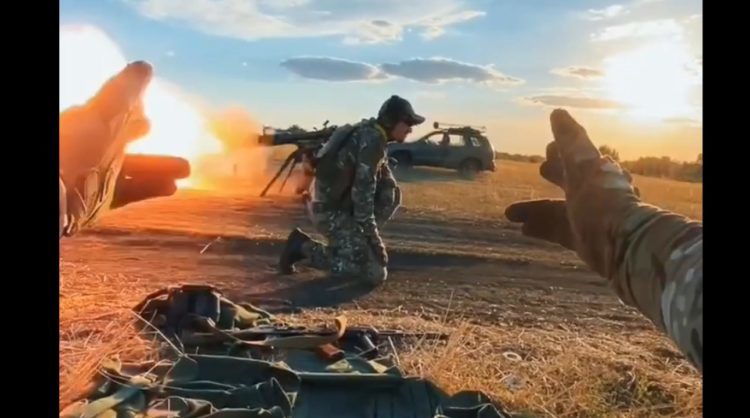The 75th NATO Summit in Washington, D.C. from 9-11 July, unfolded against a backdrop of Ukrainian hopes and recent Russian attack. Just a day before, a missile strike on Kyiv claimed 34 lives and damaged Ukraine's largest children's hospital, Okhmatdyt, underscoring the urgency of the situation.
Ukraine's primary focus remained NATO membership, though progress was limited. The summit declaration referenced both an 'irreversible path' and a 'bridge to NATO', reflecting ongoing discussions among allies. While a formal invitation would have been largely symbolic due to required reforms, its absence was notable.
Instead, NATO concentrated on bolstering military aid to Ukraine. Key decisions included strengthening air defense systems, pledging €40 billion in military support for 2025, signing the Ukrainian Compact agreement, and shifting aid coordination from the US-led Ramstein format to NATO itself. However, allies maintained their stance against allowing Ukraine to strike Russian territory with Western weapons.
Hennadiy Maksak, Executive Director of the Foreign Policy Council "Ukrainian Prism", offers a nuanced perspective. A year ago, after the Vilnius summit, Maksak wrote for Euromaidan Press that "the real battle is yet to come in Washington." Now, he views the Washington summit's outcomes as "quite normal" given the current geopolitical context.
"The political situation in NATO countries and the US, in particular, is very complex, so expecting to get a clearer articulation that Ukraine will join NATO in 5 or 7 years would have been very unprofessional," the expert told Euromaidan Press.
In this exclusive interview, Maksak analyzes how his predicted "battle" played out, explaining his evolving perspective and what the summit's outcomes mean for Ukraine's future security and NATO aspirations.
(Non)Invitation of Ukraine to NATO
The journey towards Ukraine's NATO membership has seen both progress and setbacks. The 2023 Vilnius summit waived the Membership Action Plan requirement for Ukraine and launched the NATO-Ukraine Council, signaling positive steps.
"Neither Finland nor Sweden, who joined during the Ukraine war, needed a Membership Action Plan. The procedure was already established," Hennadiy Maksak notes.
However, the recent Washington summit yielded no further advancements.
This lack of progress raises concerns, as highlighted by American diplomat Kurt Volker in a conversation with Euromaidan Press. Volker warned
that if the West tells Ukraine that NATO membership is only possible after the war ends, it signals to Putin that the war should continue. After all, preventing Ukraine's NATO membership is part of all his ultimatums for ending the war.
Maksak offers a nuanced perspective on this dilemma. He believes that Ukraine's immediate NATO accession would challenge Article 5 of the charter, a risk the US is currently unwilling to take. Instead, NATO is focusing on providing practical assistance to Ukraine.
"We Ukrainians feel this isn't enough, given our daily losses. The current support level doesn't allow us to adequately protect ourselves. However, we must recognize the limitations of democratic processes," Maksak explains.
The situation is complicated by lack of consensus among NATO's 32 members regarding Ukraine's membership. Publicly exposing these divisions could undermine NATO's credibility and cohesion.
Despite these challenges, Maksak remains cautiously optimistic and points to the evolving rhetoric.
"NATO is now using terms like 'bridge,' 'approximation,' and 'path to NATO' when discussing Ukraine. Both the speeches and the final declaration now more confidently assert that Ukraine will be integrated into this security architecture," the expert says.
This language, while not offering immediate membership, provides Ukraine with a roadmap for future integration into NATO's security framework, indicating an ongoing process of alignment.
Seeds of security from Vilnius 2023
The 2023 Vilnius NATO summit marked a turning point with the G7's declaration on bilateral agreements with Ukraine. By 2024, over 20 countries, including the US and the UK, had signed these agreements.
Hennadiy Maksak explains that the agreements establish concrete action plans between Ukraine and its Western allies on defense and security. The agreements designed to deter Russia over a 10-year timeframe, acknowledging that the war won't end soon. The overarching goal of these partnerships is to ensure Russia's defeat, with allies committed to leveraging their resources towards this end.
"Every Western country has elections, and people might come to power from whom Ukraine will receive nothing. These long-term agreements provide stability," the expert says.
These bilateral arrangements are expected to evolve into a comprehensive security architecture, with the EU and European institutions coordinating resources and efforts. The Washington summit introduced the Ukrainian Compact, signed by 23 NATO members, further solidifying support.
"Ukrainian Compact shows that the leaders have both political and defense-strategic understanding. They will support Ukraine, and this support has a strategic vision," Maksak states.
The Ukrainian Compact operates on three levels:
- Immediate needs: air defense and ammunition for Ukraine.
- Medium-term: assistance with training Ukrainians and developing the defense industry.
- Strategic: collaborative projects among NATO members, which NATO as a structure can also support.

"This forms a deterrence system. It sends a clear message to Putin that he won't outlast Western resolve," Maksak concludes.
NATO Summit in Washington bolsters military support for Ukraine
The recent NATO summit in Washington marked significant progress in military support for Ukraine, says Maksak. 5 key points from the Stoltenberg-Zelenskyy press conference include:
- Provision of 5 Patriot systems and dozens of other air defense units, along with F-16 fighter jets.
- NATO will coordinate military aid to Ukraine through a 700-person strong mission in Wiesbaden, Germany, led by three NATO generals. This replaces the US-led Ramstein format.
"700 people dedicated to Ukraine at NATO headquarters was unimaginable before. While this alone won't win the war, it's a significant step," Maksak notes.
- €40 billion commitment for Ukraine in 2025, ensuring continued military procurement capabilities.
"This €40 billion guarantees Ukraine's ability to purchase weapons and maintain its position on the battlefield," Maksak explains.
4. Additional bilateral security deals between NATO members and Ukraine.
"First, bilateral security agreements, then the deal with the EU, and now the Ukrainian Compact at the NATO summit. Given the US political climate and the fact that not all NATO members are ready to support Ukraine's invitation to NATO, this is the maximum that Kyiv could achieve," the expert explains.
5. NATO's reaffirmation to support Ukraine's transition to full operational compatibility. This includes helping reform Ukraine's defense sector, aligning its procurement practices with NATO standards, and establishing a joint training center in Poland.

Maksak advises focusing on concrete actions rather than specific terminology.
"Ukraine is moving forward within current political realities. The formula for NATO accession is taking shape, regardless of whether it's called a 'bridge' or an 'irreversible path'," he says.
This approach allows NATO allies to balance their political considerations while ensuring long-term support for Ukraine.
"The message to Putin is clear: neither his ultimatums nor outdated military equipment will prevail," the expert concludes.
NATO's Russia playbook
The Washington summit's declaration reflects
a nuanced understanding of current geopolitical realities, with Russia explicitly identified as the primary threat to NATO countries. In a notable development, China was, for the first time, labeled "a decisive enabler of Russia's war against Ukraine."
Despite these strong stances, NATO has not closed the door on diplomacy. The declaration maintains the possibility of communication channels with Russia, a point that Hennadiy Maksak finds crucial.
"Even with an aggressor, dialogue is necessary to understand when they might be ready to change their position," he explains.
The alliance's approach to nuclear deterrence has also evolved. NATO is developing more sophisticated responses to Russia's nuclear threats, creating additional deterrents.
"For instance, the US is returning its long-range missiles to Germany. This is hardly what Russia intended when invading Ukraine, and it clearly demonstrates the severe consequences Russia would face in case of escalation," Maksak predicts.
Will Ukraine ever receive a NATO invitation?
As Ukraine navigates its complex path towards NATO membership, a nuanced strategy is emerging that balances immediate security needs with long-term alliance goals.
"While political conditions are still developing, Ukraine is focusing on fulfilling technical criteria to streamline future accession," Maksak explains.
This pragmatic approach acknowledges the dual prerequisites for NATO membership: unanimous agreement among allies and the fulfillment of stringent requirements, particularly in anti-corruption efforts and defense sector reforms.
Though Ukraine can't join NATO during active conflict, its military experience may prove valuable post-war. Paradoxically, Putin's aggression has strengthened NATO, with Sweden and Finland joining and increased defense presence on the eastern flank.
Ukraine's strategy extends beyond military readiness. It's adapting to Western democratic processes and bureaucratic procedures, as evidenced by its peace formula referencing the UN Charter to foster international dialogue.
"When dealing with a Russia that disregards fundamental rules, we must find innovative ways to engage partners and potentially reshape international norms," Maksak adds.
****
Maksak believes that while the process is slow and challenging, the West is gradually coming to terms with the realities of the situation.
"The war is in Ukraine, not in the West, which is why their response takes longer. However, we're moving in the right direction," he explains.
Despite the frustrations and delays, Maksak maintains a cautiously positive outlook.
"I'm a long-term optimist in this situation," he asserts. "The progress may be slower than we'd like, but it's steady and meaningful."
- NATO Summit adopts declaration with Ukraine defense funding plan through 2025
- Biden announces five strategic air defense systems from partner countries for Ukraine
- Russia attempts to impose terror on Ukraine ahead of NATO summit, says expert
- Why EU security is under threat without Ukraine in NATO
- Historical, but transitional: Vilnius NATO Summit aftertaste





